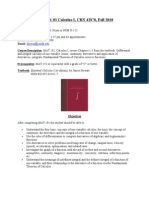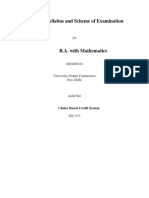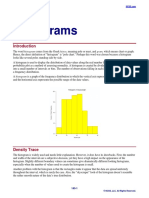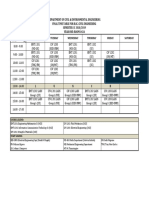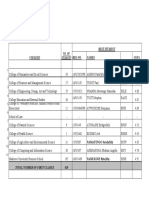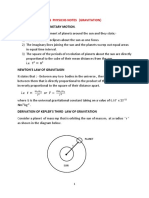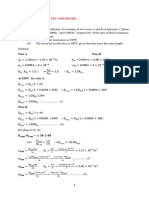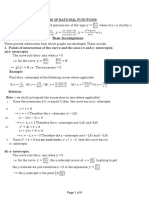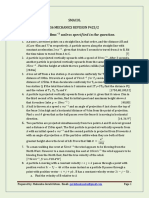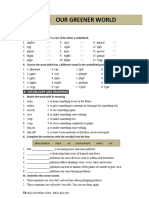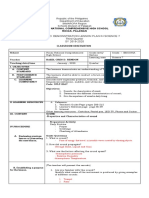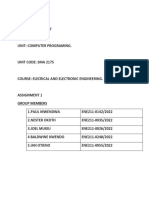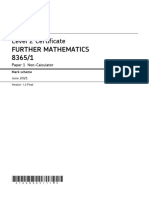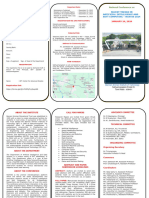DO NOT ADD ANY ROWS TO THE TABLES PROVIDED
Your Name and Surname: DEO NANGOYE
Grading system (1): Marks Letter grade Grade point Interpretation
90-100 A+ 5 Exceptional
80-89 A 5 Excellent
75-79 B+ 4.5 Very Good
70-74 B 4 Good
65-69 C+ 3.5 Fairly Good
60-64 C 3 Fair
55-59 D+ 2.5 Pass
50-54 D 2 Marginal Pass
45-49 E 1.5 Marginal Fail
1. Define the grading system adopted in the university where you attended the courses you are going to list below (e.g. A, B, C, D, or a 100-point scale, or “a 1-5 scale” with 5=max, 1=min).
2. By “courses” we mean “course units”, “modules”, “subjects”, not the whole academic programme.
3. Required field. Enter the same data as the one stated in your transcript of records, e.g. Algebra 1
4. Required field. Use minimum 100, maximum 500 characters (spaces included) to describe the topics of each course.
5. Not required but, if possible, please enter author, title and publisher.
6. Estimated information referring to the total number of hours (e.g., 45 hours corresponding to 3 hours/week in a 15-week semester).
� DO NOT ADD ANY ROWS TO THE TABLES PROVIDED
40-45 E- 1 Clear Fail
Below 40 F 0 Bad Fail
DESCRIPTION OF ATTENDED COURSES (2)
a) Please provide three courses at most in calculus and/or mathematical analysis. If you attended more than three, please provide
only three courses that are relevant to basic topics such as set theory, real numbers, functions of real variables, differential and
integral calculus, multivariate calculus, sequences and infinite series, ordinary differential equations.
Course Title (3) Main contents (4) [min. 100, max. 500 characters] Books used (5) Hours (6) Grade (3)
1. Solving first order differential equations(separable, exact,
linear, homogeneous functions, applications of first order
differential equations)
2. The theory of linear differential equations(Differential
David Betounes (Author)
operators, linear dependence and Wronskian, the Wronskian,
Differential Equations:
Homogeneous linear differential equations, Non
Theory and Applications
Differential equations I homogeneous constant coefficient equations) 45 A+
Second edition
3. Power series solutions(Review of power series, ordinary
Published by Springer
points and singular points, power series solution about an
ordinary point, solutions near regular singular points)
4. Systems of linear differential equations
• transforming an equation into a system of
differential equations
1. Define the grading system adopted in the university where you attended the courses you are going to list below (e.g. A, B, C, D, or a 100-point scale, or “a 1-5 scale” with 5=max, 1=min).
2. By “courses” we mean “course units”, “modules”, “subjects”, not the whole academic programme.
3. Required field. Enter the same data as the one stated in your transcript of records, e.g. Algebra 1
4. Required field. Use minimum 100, maximum 500 characters (spaces included) to describe the topics of each course.
5. Not required but, if possible, please enter author, title and publisher.
6. Estimated information referring to the total number of hours (e.g., 45 hours corresponding to 3 hours/week in a 15-week semester).
� DO NOT ADD ANY ROWS TO THE TABLES PROVIDED
Course Title (3) Main contents (4) [min. 100, max. 500 characters] Books used (5) Hours (6) Grade (3)
• reducing a system of differential equations into one
equation
• solving systems of differential equations(method of
elimination, matrix method)
• homogeneous linear systems(real & distinct eigen
values, complex conjugate eigen values)
• non-homogeneous systems of differential
equations(undetermined coefficients, variation of
parameters)
1. Representation formulae for solutions
➢ four important linear partial differential equations(PDE’s)
• Transport equation
• Laplace’s equation
• Heat equation
• Wave equation
➢ Non-linear first order Partial differential equations
• Characteristics
• Introduction to Hamilton-Jacobi equations Lawrence. C. Evans
• Introduction to conservation laws Partial Differential equations
Differential equations II 45 A+
➢ Other ways to represent solutions Published by American
• Separation of variables Mathematical Society
• Similarity solutions
• Transform methods(Fourier, Laplace, z-transform)
• Converting nonlinear PDE’s to linear PDE’s
• Asymptotics
• Power series
2. Theory of linear partial differential equations.
➢ Sobolev spaces
➢ Linear evolution equations
1. Define the grading system adopted in the university where you attended the courses you are going to list below (e.g. A, B, C, D, or a 100-point scale, or “a 1-5 scale” with 5=max, 1=min).
2. By “courses” we mean “course units”, “modules”, “subjects”, not the whole academic programme.
3. Required field. Enter the same data as the one stated in your transcript of records, e.g. Algebra 1
4. Required field. Use minimum 100, maximum 500 characters (spaces included) to describe the topics of each course.
5. Not required but, if possible, please enter author, title and publisher.
6. Estimated information referring to the total number of hours (e.g., 45 hours corresponding to 3 hours/week in a 15-week semester).
� DO NOT ADD ANY ROWS TO THE TABLES PROVIDED
Course Title (3) Main contents (4) [min. 100, max. 500 characters] Books used (5) Hours (6) Grade (3)
➢ Second order elliptic equations
3. Theory for nonlinear PDE’s
➢ The calculus of variations
➢ Hamilton-Jacobi equations
➢ Systems of conservation laws
➢ Non-variational techniques
1. Introduction
• What are dynamical systems?
• Examples of dynamical systems
2. Maps in one dimension
• Maps on the interval
• Periodic points and their stability.
• Bifurcation of periodic points Anatole Katok
• The dynamical zeta function Boris Hasselblatt
• Invariant measures Introduction to the Modern
Dynamical systems • The Lyapunov exponent Theory of Dynamical 45 A
3. Maps in two dimensions. Systems.
• Area preservation Cambridge University press
• Periodic points and their nature
• Stable manifold theorem and homoclinic points
• Construction of stable manifolds
• Lyapunov exponents and random matrices
• Definitions of chaos
4. Differential equations in two dimensions
• Differential equations in the plane and torus
• Poincare-Bendixon theorem
1. Define the grading system adopted in the university where you attended the courses you are going to list below (e.g. A, B, C, D, or a 100-point scale, or “a 1-5 scale” with 5=max, 1=min).
2. By “courses” we mean “course units”, “modules”, “subjects”, not the whole academic programme.
3. Required field. Enter the same data as the one stated in your transcript of records, e.g. Algebra 1
4. Required field. Use minimum 100, maximum 500 characters (spaces included) to describe the topics of each course.
5. Not required but, if possible, please enter author, title and publisher.
6. Estimated information referring to the total number of hours (e.g., 45 hours corresponding to 3 hours/week in a 15-week semester).
� DO NOT ADD ANY ROWS TO THE TABLES PROVIDED
Course Title (3) Main contents (4) [min. 100, max. 500 characters] Books used (5) Hours (6) Grade (3)
• Limit cycles
• Hopf bifurcations
• The Hilbert problem on limit cycles
5. ODEs in higher dimensions
• Differential equations in space
• The attractor in the Lorentz system
• Forced oscillators
• Lyapunov functions for ODE’s
• Strange attractors
6. Billiards
• Billiards
• The variational setup
• Existence of periodic points
• Polygonal billiards
• Chaos for the stadium billiard
7. Cellular automata
• Curtis-Hedlund-Lyndon theorem
• Topological entropy for CA–Attractors
• Higher dimensional automata
• Special solutions
8. Maps in the complex plane
• Mandelbrot and Julia sets
• Basics of complex dynamics
• Some topological notions
• Connectivity of Mandelbrot set
9. Subshifts of finite type
1. Define the grading system adopted in the university where you attended the courses you are going to list below (e.g. A, B, C, D, or a 100-point scale, or “a 1-5 scale” with 5=max, 1=min).
2. By “courses” we mean “course units”, “modules”, “subjects”, not the whole academic programme.
3. Required field. Enter the same data as the one stated in your transcript of records, e.g. Algebra 1
4. Required field. Use minimum 100, maximum 500 characters (spaces included) to describe the topics of each course.
5. Not required but, if possible, please enter author, title and publisher.
6. Estimated information referring to the total number of hours (e.g., 45 hours corresponding to 3 hours/week in a 15-week semester).
� DO NOT ADD ANY ROWS TO THE TABLES PROVIDED
Course Title (3) Main contents (4) [min. 100, max. 500 characters] Books used (5) Hours (6) Grade (3)
• Bernoulli shift
• Subshifts of finite type
• Sophic subshifts
• Normal numbers and randomness
10. Dynamical systems in number theory
• Irrational rotation on the torus
• Dirichlet theorem
• Continued fractions
• Diophantine lattice point problems
• Unique and stricter godicity
11. Many body problems
• The equations of then-body problem
• Integrals and the solution of the 2 body problem
• The Sitnikov problem
• Changing into rotating coordinate system
• The planar restricted three body problem
• Non-collision singularities and special solutions
12. Geodesic flows
• Geodesic flows examples
• Surfaces of revolution
• Surface billiards
• Wave fronts and caustics
b) Please provide one course in linear algebra. If you attended more than one, please provide one that is relevant with respect to linear
spaces, matrices, solution of linear systems, eigenvalues, eigenvectors.
1. Define the grading system adopted in the university where you attended the courses you are going to list below (e.g. A, B, C, D, or a 100-point scale, or “a 1-5 scale” with 5=max, 1=min).
2. By “courses” we mean “course units”, “modules”, “subjects”, not the whole academic programme.
3. Required field. Enter the same data as the one stated in your transcript of records, e.g. Algebra 1
4. Required field. Use minimum 100, maximum 500 characters (spaces included) to describe the topics of each course.
5. Not required but, if possible, please enter author, title and publisher.
6. Estimated information referring to the total number of hours (e.g., 45 hours corresponding to 3 hours/week in a 15-week semester).
� DO NOT ADD ANY ROWS TO THE TABLES PROVIDED
Course Title (3) Main contents (4) [min. 100, max. 500 characters] Books used (5) Hours (6) Grade (3)
1. Vector spaces
2. Linear mappings
3. Linear mappings and matrices
4. Inner product spaces, orthogonality
Seymour Lipschutz, Marc
5. Determinants
Lipson
6. Diagonalisation (Eigen values & eigen vectors)
Schaum’s Outlines Linear
Linear algebra II 7. Canonical forms 45 A+
algebra
8. Linear functionals and the dual space
Third edition
9. Bilinear, Quadratic & Hermitian forms
Published by McGraw-Hill
10. Linear operators on inner product spaces
11. Multilinear products
c) Please provide no more than two additional mathematics courses, preferably in the areas of numerical analysis and/or probability.
Please give priority to basic courses rather than to advanced ones.
Course Title (3) Main contents (4) [min. 100, max. 500 characters] Books used (5) Hours (6) Grade (3)
1. Random variables and Distributions
• Random variables and discrete distributions
• Continuous distributions Morris H. DeGroot
PROBABILTY AND
• The distribution function
Probability theory STATISTICS 45 A
• Bivariate distributions
Second edition
• Marginal distributions Published by Pearson
• Conditional distributions
• Multivariate distributions
1. Define the grading system adopted in the university where you attended the courses you are going to list below (e.g. A, B, C, D, or a 100-point scale, or “a 1-5 scale” with 5=max, 1=min).
2. By “courses” we mean “course units”, “modules”, “subjects”, not the whole academic programme.
3. Required field. Enter the same data as the one stated in your transcript of records, e.g. Algebra 1
4. Required field. Use minimum 100, maximum 500 characters (spaces included) to describe the topics of each course.
5. Not required but, if possible, please enter author, title and publisher.
6. Estimated information referring to the total number of hours (e.g., 45 hours corresponding to 3 hours/week in a 15-week semester).
� DO NOT ADD ANY ROWS TO THE TABLES PROVIDED
Course Title (3) Main contents (4) [min. 100, max. 500 characters] Books used (5) Hours (6) Grade (3)
• Functions of a random variable
• Functions of two or more random variables
• The Borel-Kolmogorov paradox
2. Expectation
• The expectation of a random variable
• Properties of expectation
• Variance
• Moments, moment generating functions
• The mean and the median
• Covariance and correlation
• Conditional expectation
• The sample mean(Markov and Chebyshev
inequalities, The law of large numbers)
• Utility, utility functions
3. Special distributions
• The Bernoulli and Binomial distributions
• The hypergeometric distribution
• The poisson distribution
• The negative binomial distribution
• The normal distribution
• The central limit theorem
• The correction for continuity
• The Gamma distribution
• The Beta distribution
• The multinomial distribution
• The Bivariate normal distribution
4. Estimation
• Statistical inference
1. Define the grading system adopted in the university where you attended the courses you are going to list below (e.g. A, B, C, D, or a 100-point scale, or “a 1-5 scale” with 5=max, 1=min).
2. By “courses” we mean “course units”, “modules”, “subjects”, not the whole academic programme.
3. Required field. Enter the same data as the one stated in your transcript of records, e.g. Algebra 1
4. Required field. Use minimum 100, maximum 500 characters (spaces included) to describe the topics of each course.
5. Not required but, if possible, please enter author, title and publisher.
6. Estimated information referring to the total number of hours (e.g., 45 hours corresponding to 3 hours/week in a 15-week semester).
� DO NOT ADD ANY ROWS TO THE TABLES PROVIDED
Course Title (3) Main contents (4) [min. 100, max. 500 characters] Books used (5) Hours (6) Grade (3)
• Prior and posterior distributions
• Conjugate prior distributions
• Bay’s estimators
• Maximum likelihood Estimators
• Sufficient statistics
• Jointly sufficient statistics
• Improving an estimator
5. Sampling distributions of estimators
• The sampling distribution of a statistic
• The chi-square distribution
• Joint distribution of the sample mean and sample
variance
• The t-distribution
• Confidence intervals
• Bayesian Analysis of samples from a normal
distribution
• Unbiased estimators
• Fisher information
1. Numerical methods for differentiation & integration M.J. Maron
𝑏 Numerical analysis: A
• approximating f (k) (𝑥) & ∫𝑎 𝑓(𝑥)𝑑𝑥 as ∑𝑛𝑖=0 W𝑖 𝑓(𝑥𝑖 )
practical approach, second
Numerical analysis II • numerical differentiation and Richardson’s formula edition.
45 A
• composite rules and Romberg integration(Quadrature Macmillan publishing
formulae for h-spaced nodes) company(New York)
1. Define the grading system adopted in the university where you attended the courses you are going to list below (e.g. A, B, C, D, or a 100-point scale, or “a 1-5 scale” with 5=max, 1=min).
2. By “courses” we mean “course units”, “modules”, “subjects”, not the whole academic programme.
3. Required field. Enter the same data as the one stated in your transcript of records, e.g. Algebra 1
4. Required field. Use minimum 100, maximum 500 characters (spaces included) to describe the topics of each course.
5. Not required but, if possible, please enter author, title and publisher.
6. Estimated information referring to the total number of hours (e.g., 45 hours corresponding to 3 hours/week in a 15-week semester).
� DO NOT ADD ANY ROWS TO THE TABLES PROVIDED
Course Title (3) Main contents (4) [min. 100, max. 500 characters] Books used (5) Hours (6) Grade (3)
• methods based on unevenly spaced nodes(Gauss
quardrature)
• multiple integration
2. Numerical methods for ordinary differential equations.
• the initial value problem(IVP)-self starting methods:
Runge-Kutta & Taylor
• multistep(predictor-corrector methods)
• first order systems & nth order IVP’s
• Boundary value problems
3. Eigen values
• basic properties of eigen values & eigen vectors
• the power method
• methods of finding all eigen pairs of a matrix
• characteristic values & solutions to homogeneous
boundary value problems(BVP’s)
• using eigen values to uncover the structure of A
d) Please provide a list of programming languages you studied (no more than three). For each programming language, provide details
of one course in which you learned how to use it.
1. Define the grading system adopted in the university where you attended the courses you are going to list below (e.g. A, B, C, D, or a 100-point scale, or “a 1-5 scale” with 5=max, 1=min).
2. By “courses” we mean “course units”, “modules”, “subjects”, not the whole academic programme.
3. Required field. Enter the same data as the one stated in your transcript of records, e.g. Algebra 1
4. Required field. Use minimum 100, maximum 500 characters (spaces included) to describe the topics of each course.
5. Not required but, if possible, please enter author, title and publisher.
6. Estimated information referring to the total number of hours (e.g., 45 hours corresponding to 3 hours/week in a 15-week semester).
� DO NOT ADD ANY ROWS TO THE TABLES PROVIDED
Programming Language Course Title (3) Books used (5) Hours (6) Grade (3)
Eva Part Enander, Anders
Sjoberg, Bo Melin, Pernilla
Isaksson
MATLAB Numerical Analysis II THE MATLAB® 45 A
HANDBOOB
Addison Wesley Longman
limited
Python Self-taught using YouTube videos
LaTeX Self-taught using YouTube videos
I verify under my full responsibility that I have given correct and true information on all of the above.
Date and place Signature
10/12/2023 Kampala Uganda
1. Define the grading system adopted in the university where you attended the courses you are going to list below (e.g. A, B, C, D, or a 100-point scale, or “a 1-5 scale” with 5=max, 1=min).
2. By “courses” we mean “course units”, “modules”, “subjects”, not the whole academic programme.
3. Required field. Enter the same data as the one stated in your transcript of records, e.g. Algebra 1
4. Required field. Use minimum 100, maximum 500 characters (spaces included) to describe the topics of each course.
5. Not required but, if possible, please enter author, title and publisher.
6. Estimated information referring to the total number of hours (e.g., 45 hours corresponding to 3 hours/week in a 15-week semester).











